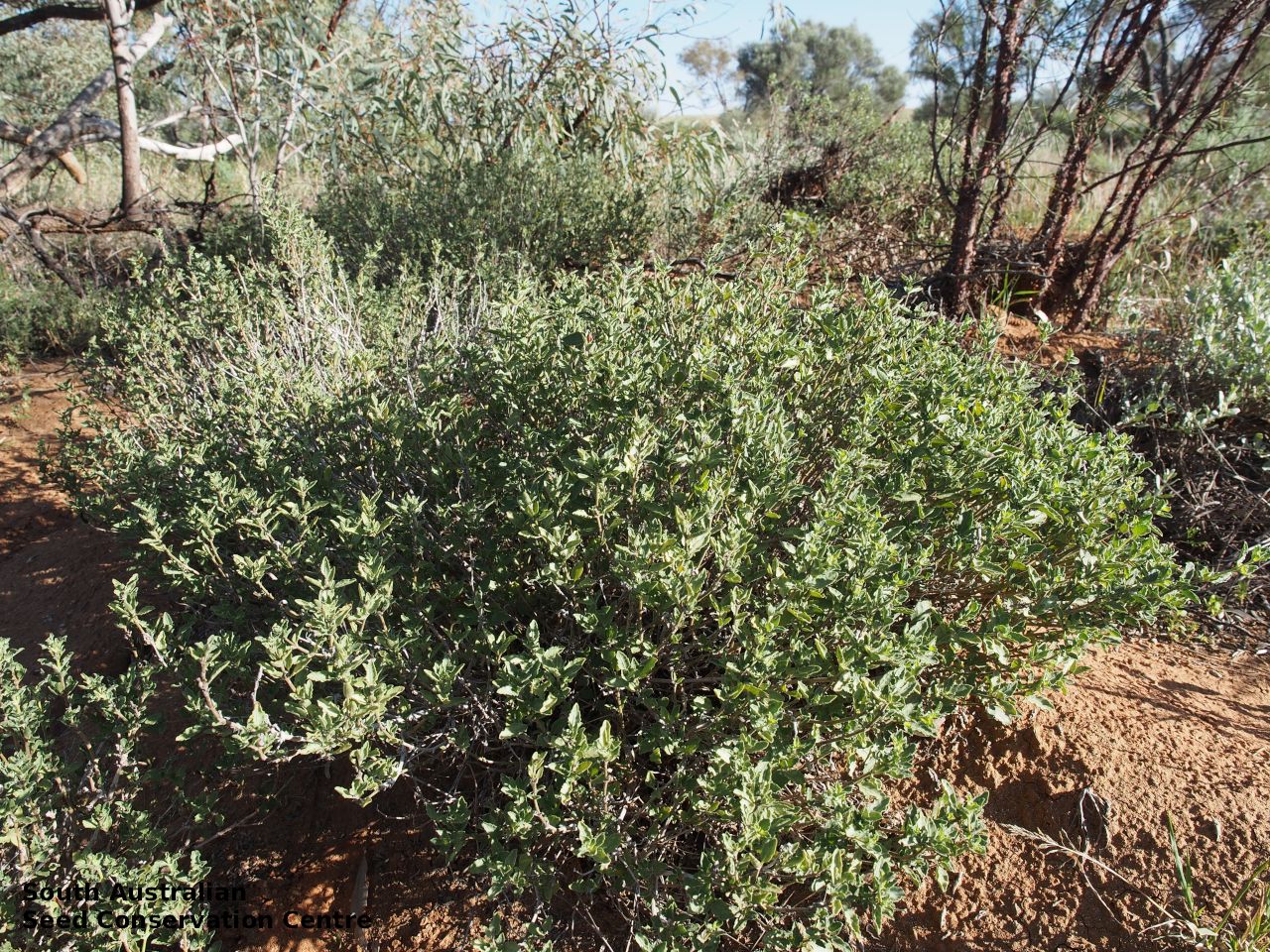
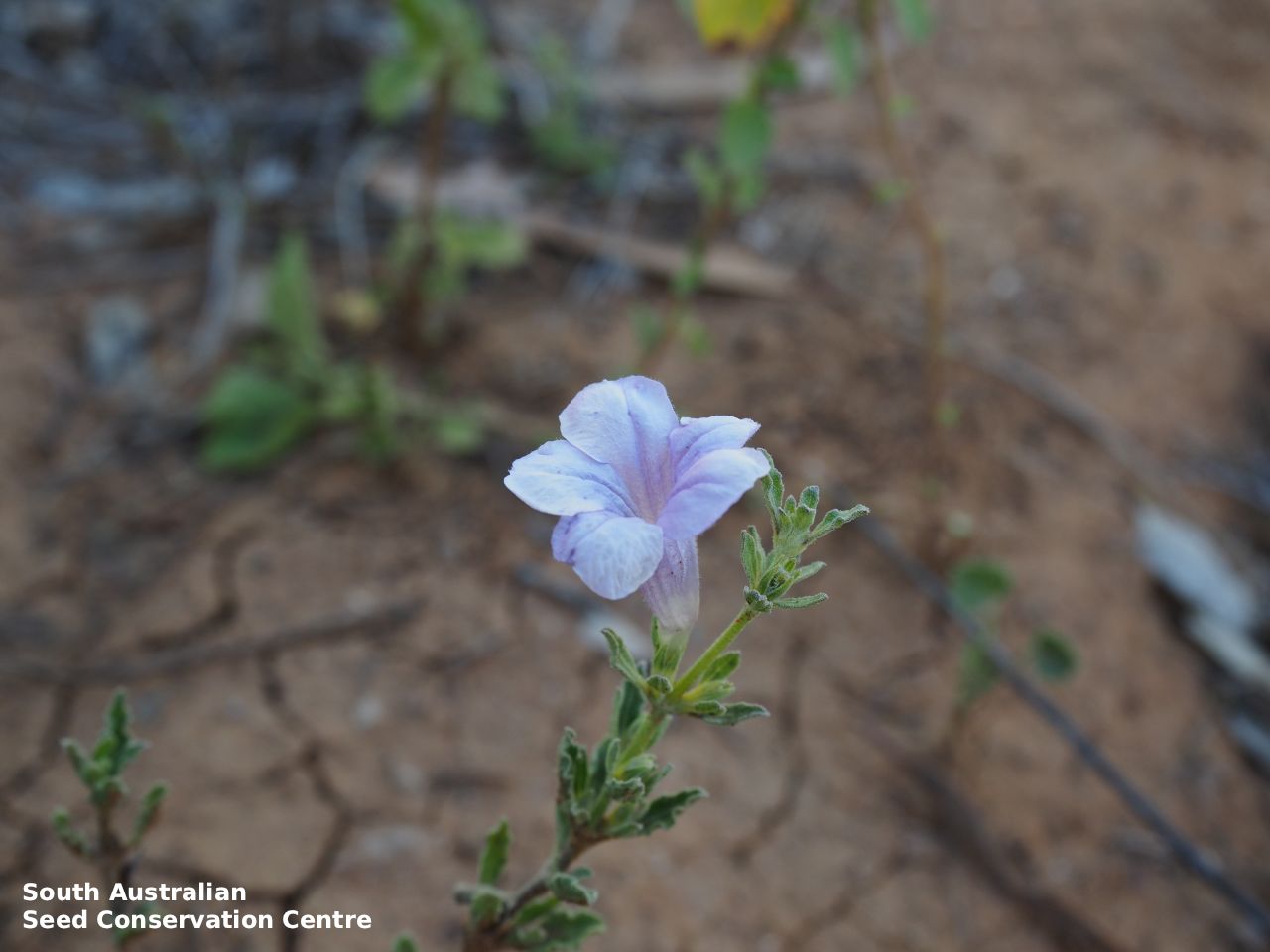
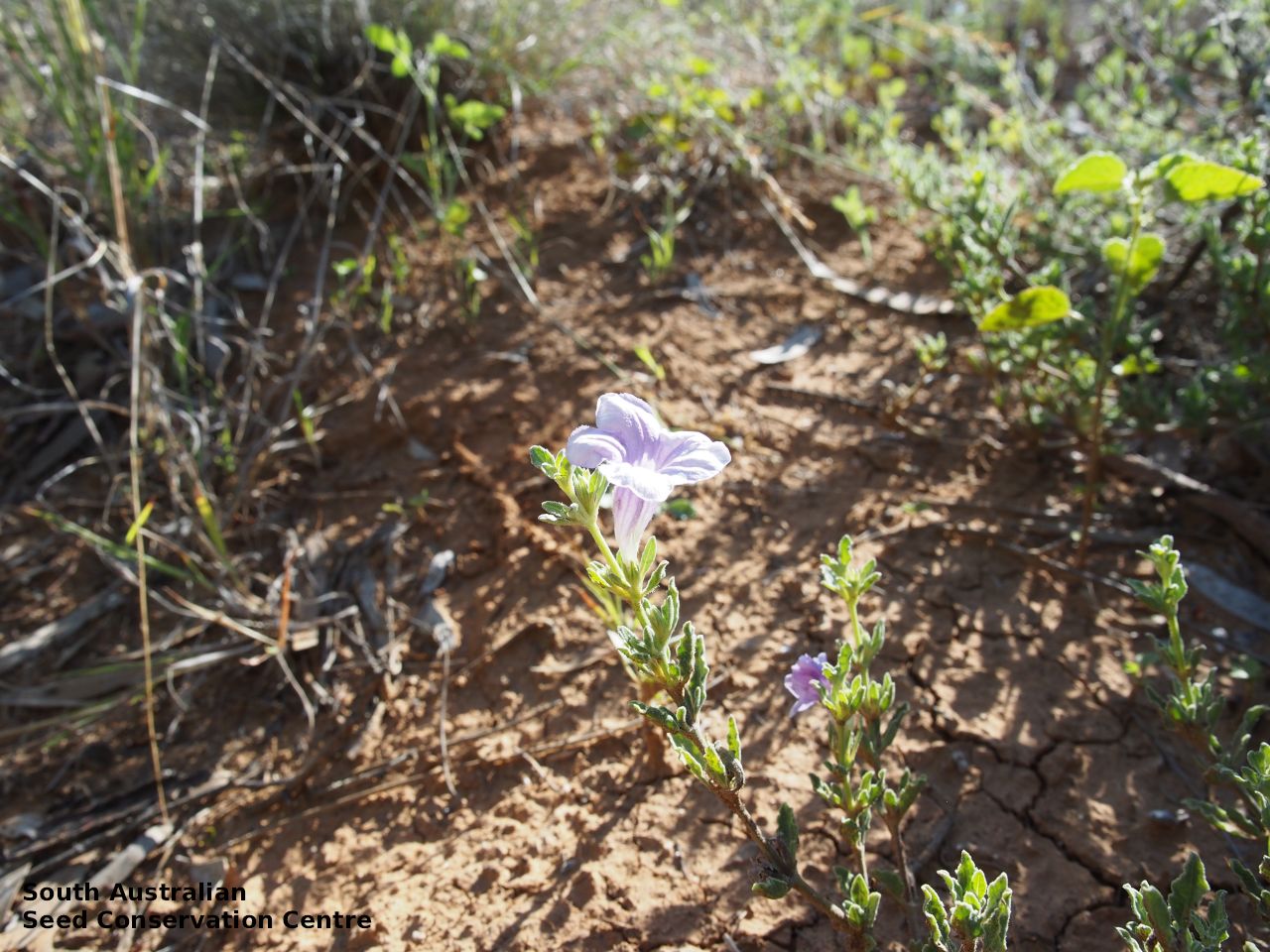
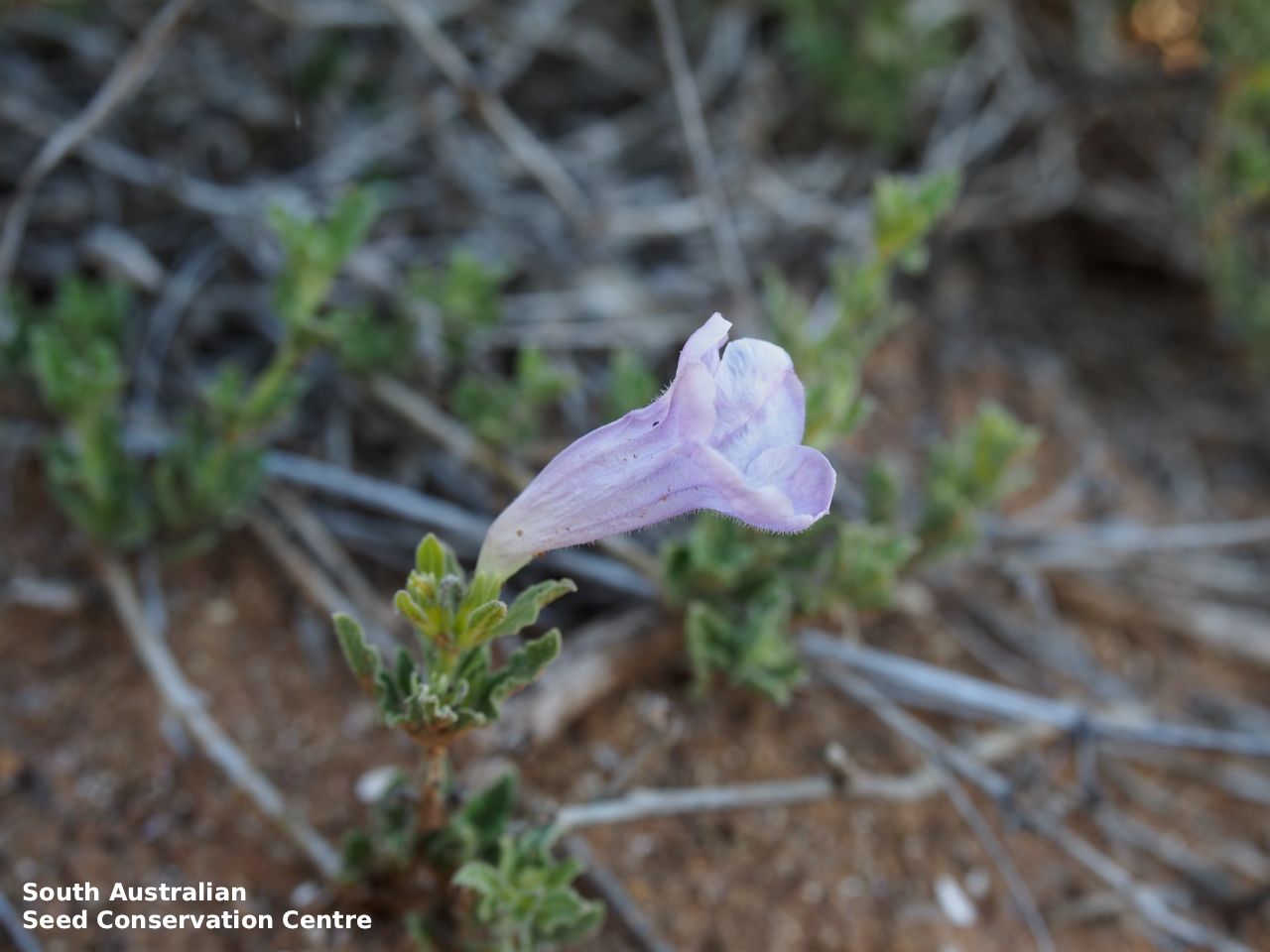
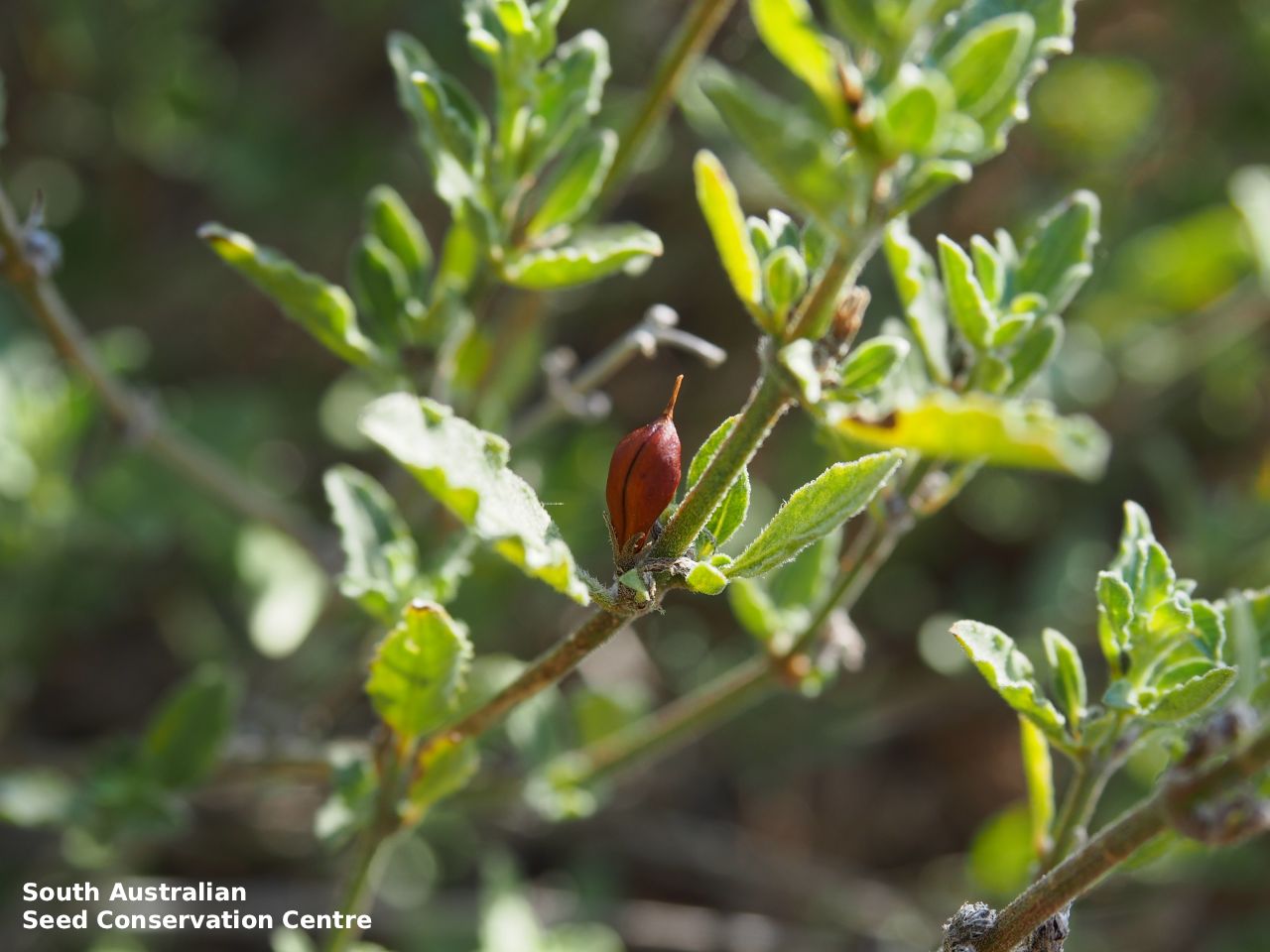


Prior names
Dipteracanthus corynothecus
Ruellia primulacea
Ruellia corynotheca
Dipteracanthus sessiliflorus
Dipteracanthus primulaceus
Dipteracanthus corynothecus var. grandiflorus
Dipteracanthus corynothecus
Etymology
Dipteracanthus from the Greek 'di' meaning two, 'pteron' meaning wing and 'acantha' meaning thorn; referring to the two large leafy bracteoles enclosing the base of the corolla tube. Australasicus means of Australian origin; referring to the its distribution.
Distribution and status
Found in the north and north-eastern parts of South Australia, growing in rocky areas near or in creek beds. Also found in Western Australia, Northern territory, Queensland and New South Wales. Native. Uncommon in South Australia. Rare in New South Wales. common in the other states.
Herbarium regions: North Western, Lake Eyre
NRM regions: Alinytjara Wilurara, South Australian Arid Lands
AVH map: SA distribution map (external link)
Plant description
Compact, intricately branched, woody shrub to 150 cm tall. Leaf blade ovate or oblong, to 25 mm long and 11.5 mm wide, scabrous or with short, white, appressed hairs, particularly dense in young parts. Inflorescence singleper axil or triad with outer flowers present as tiny buds. Flowers tubular, corolla blue, mauve or purple, internally with V-shaped patch of hairs at apex of tube, throat externally with fine hairs, internally glabrous, style hairy, sometimes sparsely so, calyx 5 moderately dense hairs. This subspecies is distinguished from the other subspecies of D. australasicus by its pubescent leaf blade, style and external corolla throat. Flowers in most months of the year and is presumably dependent on rains. Fruits are brown capsule to 17 mm long and 10 mm wide, with 3-5 seeds developing in each valve.
Seed collection and propagation
Collect seeds between January and December. Collect capsules that are maturing, drying off and turning brown. Green capsules can be collected if the seeds are hard and brown. Place the capsules in a paper bag or tray and allow to dry for 1 to 2 weeks. Gently rub the dried capsule by hand or with a rubber bung to dislodge the seeds. Use a sieve to separate the unwanted material. Store the seeds with a desiccant such as dried silica beads or dry rice, in an air tight container in a cool and dry place.